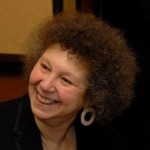Musings from Students of the Pardes Institute of Jewish Studies in Jerusalem
Posted on November 21, 2013 by The Director of Digital Media
Laurie Franklin (Year '13) sent us these words of wisdom for Thanksgivukkah:
Laurie Franklin is the spiritual leader and rabbinic intern at Har Shalom. She can be reached at laurief AT har-shalom DOT org.
 While we celebrate the once-in-a-lifetime convergence of the first day of Hanukkah and our beloved American Thanksgiving on Thursday November 28, let’s have some fun with other aspects of Hanukkah. Glowing lights at the darkest season of year are beautiful and comforting. But there’s more, much more.
While we celebrate the once-in-a-lifetime convergence of the first day of Hanukkah and our beloved American Thanksgiving on Thursday November 28, let’s have some fun with other aspects of Hanukkah. Glowing lights at the darkest season of year are beautiful and comforting. But there’s more, much more.
Recently, I’ve been reading rabbinic texts about Hanukkah by the Sfat Emet (1847-1905) and the Bnei Yissachar (c. 1783-1841). These Hassidic rabbis wrote study texts for their students that were meant to elevate them spiritually. Their s’forim, books, are inspirational writings, full of Biblical references and mystical imagery.
Here’s a sampling: The Sfat Emet teaches that the light of the Hanukkah candles is the candle of God shining within each person, a holy, pure point that illumines our interior spaces. Further, he says that the light of the Holy Temple in Jerusalem shines within us, citing Exodus 25:8, “They will make me a sanctuary and I will dwell among them”. So, the Hanukkah lights are also the lights of the Temple lamp, connecting us with the Shechinah, the indwelling, earthly presence of God. Remember: the first hanukkiah, a.k.a. menorah or Hanukah lamp, was kindled to rededicate the Second Temple when the Maccabees defeated Antiochus in 165 BCE, restoring Divine presence to the desecrated Temple. The Sfat Emet teaches that the light of the hanukkiah is also the light of the creation because all life owes its existence to God. By means of this internalized light of creation, we gather strength to seek and find holiness. So, when we gaze at the glowing Hanukkah lamp, we can sense Divine light, the Holy Temple of Jerusalem, and the light of creation, each one glowing within us.
The Bnei Yissachar loves numbers and puns, and liberally seasons his teachings with them. He tells us that the 36 candles of Hanukkah—not counting the eight candles that light the daily candles—correspond to 36 mentions in Torah of the words ”candle” (ner), “light” (or), and “natural light sources” (m’orot). These 36 words refer to the first 36 hours of light experienced by the first human beings, 12 hours on the sixth day and 24 hours on the first Sabbath. The Bnei Yissachar calls this primeval light the “hidden light that is concealed in Torah”. Because Hanukkah begins in the Hebrew month of Kislev, the Bnei Yissachar teaches that the name of the month is a compound pun; “kis” derives from the Hebrew root for concealed or covered, ”kasah”, and “lev” derives from the numerical value of the Hebrew letters that spell it, lamed (30) and vav (6), which add up to 36. So, Kislev, literally “hidden thirty-six”, is the month in which we see the primeval light of Torah revealed through the 36 candles of Hanukkah. This teaching parallels the Sfat Emet’s idea about the light of creation, but develops it further, reminding us that Torah is present in Hanukkah lights, revealed to us in a dark season, a reminder of Divine constancy as we endure winter and pray for a fruitful year ahead.
As I light Hanukkah candles this week, I will remember the teachings of the Sfat Emet and the Bnei Yissachar. The soft candlelight will glow without and within. Happy Hanukkah!